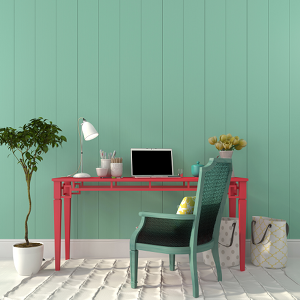7 Tips for Creating an Excellent Home Office and Increasing Productivity
Working from home is beneficial in a number of ways, from increased flexibility and comfort to money saved. While it’s perfectly acceptable to work on the sofa with a laptop in pajamas, having an area in the home designed specifically for work can offer a wide range of advantages.
Even those living in cramped spaces can reserve a small area to use only for business. Having an arsenal of tips and tricks for creating a great home office can help any telecommuter increase productivity and maintain professionalism.
1.) Designate a Space and Make it Known to the Family
The first tip is pretty straightforward. It’s essential to designate a space as your home office, whether it’s an entire room or just a corner of the home that gets less traffic than the rest.
An actual office (a whole room with a desk and copier and a closing door) isn’t necessary, although those who are lucky enough to have one available should absolutely take advantage of it.
If that’s not feasible, find another solution. An empty guest bedroom that is only used three or four times a year can make the perfect office. A large closet with a light and ventilation can work with a small folding table and a comfortable chair. No matter what area is chosen, it’s important that everyone else who lives in the home understands that it’s a work area and to lay low when the area is in use. It’s also important that the area is used only for work, so if the closet is chosen, it should be emptied of clothing and clutter, which brings up the next point.
2.) Clean It Up

One of the most important things a telecommuter can do to increase productivity is clean their workspace, and this includes getting rid of unnecessary clutter. Studies have found that clutter affects a person’s ability to focus and be productive. It makes it very hard to focus and limits the brain’s ability to process information. It’s important to make sure the home office area is clean, clutter-free, and that the only things present are the things needed to perform the job.
3.) Add a Little Color
Those lucky enough to have an actual office in their home (or a room that they can convert into an office) can take advantage of psychology to increase their productivity through the use of color.
When increased productivity means increased profit for the telecommuter, it’s certainly worth thinking about. Shades of blue have been found to be the most calming, and excellent for increasing productivity. Soft neutrals are also excellent choices; muted shades of ocher, taupe and other earthy tones are calming and cause less eye strain than brighter, more vivid colors.
The best colors to avoid for a home office include:
- Red – studies have found that the color red can actually increase a person’s heart rate and cause faster, more forceful reactions.
- White – while white is commonly used in offices, studies have found that too much white creates a clinical feeling and can be intimidating.
- Yellow – while yellow can be a great color when used sparingly or in muted, pale shades, studies have found that individuals are more likely to lose their temper in a yellow room.
The best colors for increasing productivity include:
- Blue – a calming color that helps individuals focus and produces less eye fatigue, blue is a great color for home offices.
- Green – a lot of green in a room helps produce the feeling of being in nature, which helps to relieve stress and increase focus.
- Taupe/Tan/Earthy Colors – these colors are calming when used in warm, muted shades. They produce less eye-fatigue and increase productivity.
4.) Personalize the Work Space
In addition to de-cluttering the home office and paying close attention to the color, research shows that personalizing a home office area can help decrease stress while boosting moods and productivity.
In a study published in the Journal of Environmental Psychology, psychological scientists Gregory A. Laurence, Linda H. Slowik and Yitzhak Fried found that individuals who personalized their workspaces enjoyed lower stress and increased productivity. Adding framed photographs, art, window dressings, or other items that are unique to the telecommuter’s style and tastes can really help personalize the home office and improve his or her productivity.
5.) Cut Out the Noisy Distractions

Having a home office can feel kind of pointless if the telecommuter is constantly distracted by the sound of the television in the living room, the kids playing outside in the yard, or the neighbor blasting Metallica every evening.
When choosing an area for the home office, individuals should consider the noise levels. It’s important to find an area where it’s peaceful and where the individual isn’t likely to be distracted by noise.
Those who are limited to choices when it comes to a home office area can utilize a few different methods to help drown out background noise. Researchers at Rensselaer Polytechnic Institute found that natural sounds can increase focus while improving moods; consider playing CDs with the sounds of a rainstorm, a bubbling stream or even a tropical forest. White noise, such as the sound of a fan in the background, can also help.
6.) Bring Nature Indoors

In the same way that personal items can improve mood and productivity within a home office, research shows that adding a few houseplants can also positively affect a telecommuter’s output and well-being.
Exeter University psychologist Chris Knight and his colleagues performed a study in which plants were added to the workspaces of city auditors in London, as well as other offices. When those plants were added (one plant per square meter), the employee performance increased substantially, specifically memory retention and basic task performance. So, whether it’s an African Violet on the desk, an ivy on the windowsill or a ficus tree in the corner, houseplants are another excellent way to improve a home office substantially.
7.) Let There be Light

If it’s possible to create a home office area in a location that has a lot of natural light, it’s the best option.
A study performed by Northwestern Medicine and the University of Illinois at Urbana-Champaign found that exposure to natural light during the day improved mood, alertness and metabolism. Those forced to work in areas with low or inadequate light were found to experience more physical health problems, lower vitality and lower sleep quality than their counterparts who were exposed to more natural light during the day. A window or two in the home office can dramatically improve a telecommuter’s overall health and productivity.
While many telecommuters aren’t lucky enough to have a large, lavish, quiet office, it’s possible to create a comfortable workspace that helps increase productivity and mood. By doing so, these individuals have an area that allows them to keep work somewhat separate from their home life while still enjoying all of the benefits that telecommuting is being praised for.
